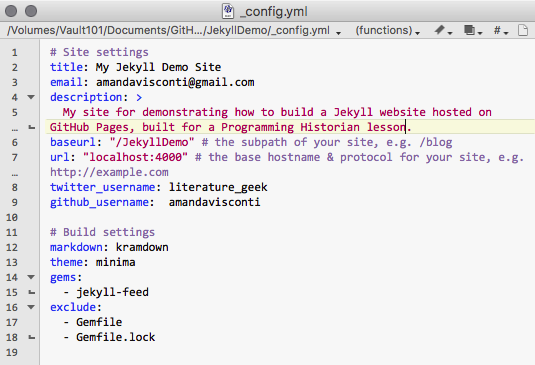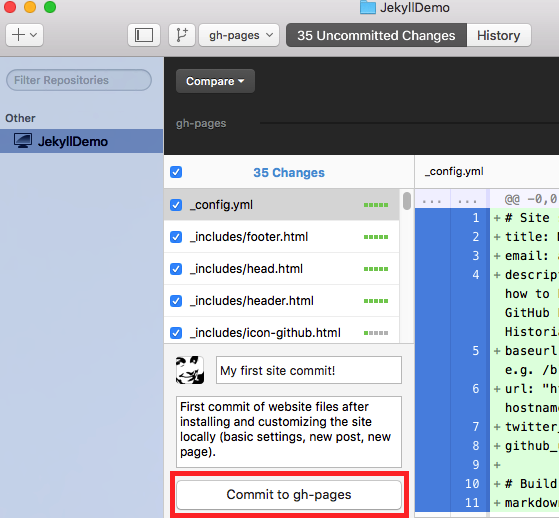

- Making a website in ruby jekyll tutorial how to#
- Making a website in ruby jekyll tutorial install#
- Making a website in ruby jekyll tutorial generator#
You can also use front matter to reference the layout you’d like to use. Similar to the config file, front matter contains your document title, date, and other metadata. This is what separates static files from those that are processed by Jekyll. Posts are special, and are named using the format YYYY-MM-DD-title.markdown.Īs another important distinction, all documents and pages start with a block of YAML called front matter. Inside the _posts folder, you should see a sample post called “Welcome to Jekyll,” containing some Markdown-formatted text. Collection folders always start with underscore, and by default you’ll see a collection called _posts which is designed to behave like a blog. One of Jekyll’s most exciting features is Collections, which is essentially a folder of text files (called Documents). Includes are great for small bits of reusable code, and Layouts define how a page will render. You should see a pair of special folders called _includes and _layouts, this is where your Liquid files will go. You can refer to Jekyll’s excellent documentation for a full list of configuration settings.

These settings can be referenced in Liquid using the site prefix, for example: blog url : " " # the base hostname & protocol for your site twitter_username : jekyllrb github_username : jekyll baseurl : " " # the subpath of your site, e.g. It will appear in your document head meta (for Google search results) and in your feed.xml site description. # Site settings title : Your awesome title email : description : > # this means to ignore newlines until "baseurl:" Write an awesome description for your new site here. You can confirm by running the following command: We’ll be following the quick-start instructions on Jekyll’s website.įirst, you’ll want to make sure you are running a recent version of Ruby.
Making a website in ruby jekyll tutorial install#
To get started, we are going to install Jekyll, which is available to download as a Ruby gem. It’s also what powers GitHub Pages, which serves more than half a million websites.

It takes Markdown text (your site’s content) and Liquid templates (your site’s theme) and outputs simple HTML that can be hosted pretty much anywhere.
Making a website in ruby jekyll tutorial generator#
Jekyll is a static website generator built on Ruby. Also make sure to check out the next tutorial where we’ll connect our site to the new Siteleaf v2 so we can edit content in the cloud. This will give you a functional website that you can edit offline. We’ll cover installation, creating a new site, file structure, and finally we’ll commit the new site to GitHub.
Making a website in ruby jekyll tutorial how to#
In this tutorial, we’ll show you how to get set up and develop websites locally using Jekyll. Stay tuned for a future tutorial on themes! For the purpose of this tutorial you may want to downgrade to Jekyll 3.1.6 (to remove other versions, run gem uninstall jekyll). Newer versions (3.2+) will give you a theme by default instead of _layouts and _includes. This tutorial was created using Jekyll version 3.1.6.


 0 kommentar(er)
0 kommentar(er)
